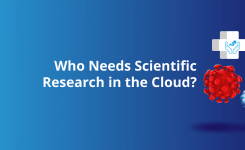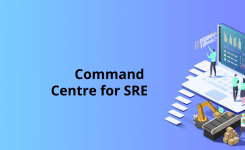2022 Blog, Blog, Featured
Next Generation Cloud Management with Application-Centric Insights using ServiceNow
With the growing demand for moving to the cloud, organizations also face various challenges, such as the ability to track costs, health, security, and assets at application levels. Having this ability can help organizations get a clear picture of their business metrics (revenue, transaction costs, customer-specific costs, etc.). Some of the other challenges that they face are as follows:
- No clear definition of what is a service or application. The concept keeps changing from customer to customer based on the business’s criticality and need.
- Separation of business applications from Internal applications or software services.
- Deployment of applications across accounts and regions makes consolidation harder.
- Dependent services and microservice concepts complicate the discovery process.
- Complex setup involving clustered and containerized deployments promoting service-oriented architecture.
- What is the target business/efficiency goal? Is it tracking cost, better diagnostics, or CMDB? What is linking to business Unit or Application level spend tracking?
Modeling a Common Customer Use Case
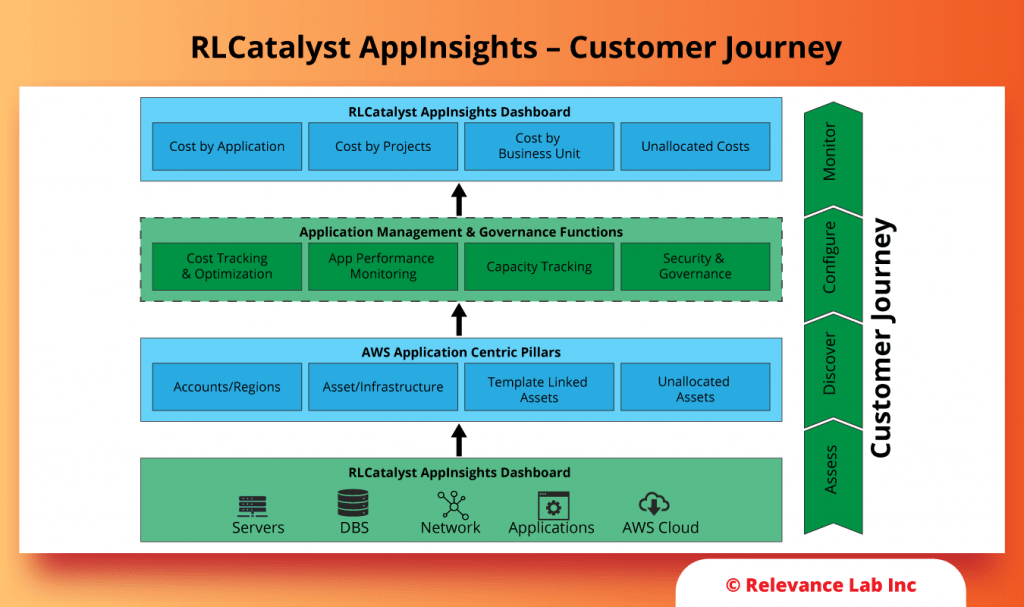
A typical large enterprise goes through a maturity journey from a scattered Infrastructure Asset Management to a more matured Application Asset Management.
Need for Automated Application Service Mapping
Applications are common focal points related to business units and business services that are highlighted by the customers.
- It is important to track the cost and expenses at the application level for chargebacks. This requires an asset and cost-driven architecture. There is no common way to automate the discovery of such applications unless defined by Customers and linked to their infrastructure.
- Business endpoint applications are served as a combination of assets and services
- Knowing such dynamic topology can help with better monitoring, diagnostics, and capacity planning
- There is a way to discover the infrastructure linked to templates and a service registry, but no easy way to roll that to an application linking
RLCatalyst AppInsights Solution
RLCatalyst AppInsights helps enterprises understand their current state of maturity by defining the global application master and linkage to business units. This is done using the discovery process to link applications, assets, and costs as a one-time activity. In this process, assets are categorized into two categories – allocated or mapped assets (i.e., assets linked to templates) and unallocated assets (i.e., assets that are not linked to any templates).
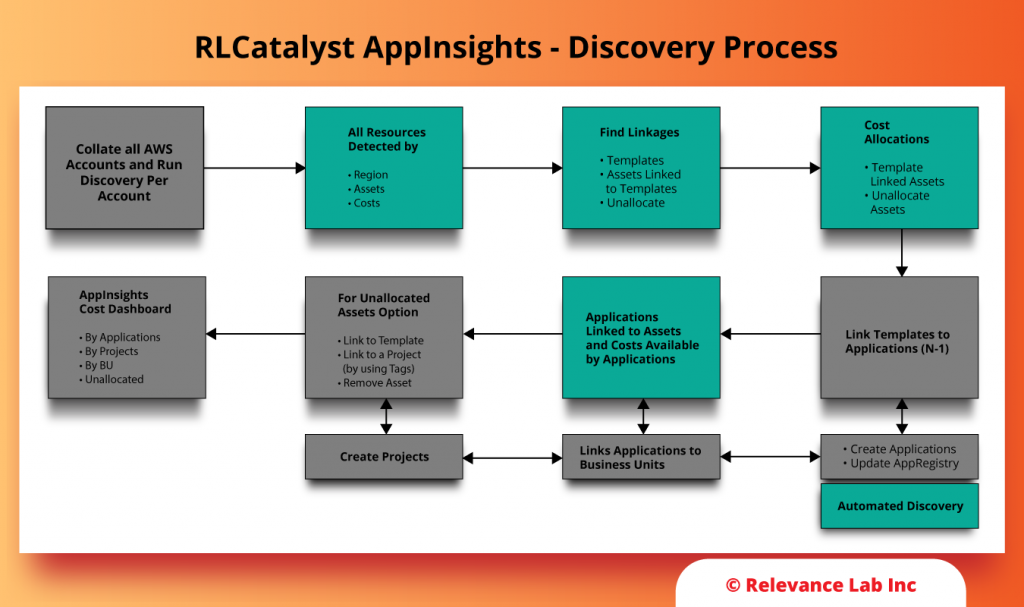
As shown in the above picture of the discovery process, all assets across your AWS accounts are brought into ServiceNow asset tables using Service Management Connector. Once done using RLCatalyst AppInsights, all assets are demarcated with assets linked to templates and the ones that do not have templates (unallocated assets). At this stage, we have cost allocations across assets linked to templates and unallocated assets. The next step is linking the templates to applications creating a mapping between applications and business units.
Similarly, for all the unallocated assets, we can look at either linking them to newly created templates or linking them to a project and terminating/cleaning up the same. Once you have all this in place, all the data would automatically build your dashboard in terms of cost by applications, Projects, BU, and unallocated costs.
For any new application deployment and infrastructure setup, it would follow the standard process to ensure assets are provisioned through templates, and appropriate taggings are enabled. This is enforced using guardrails for ongoing operations.
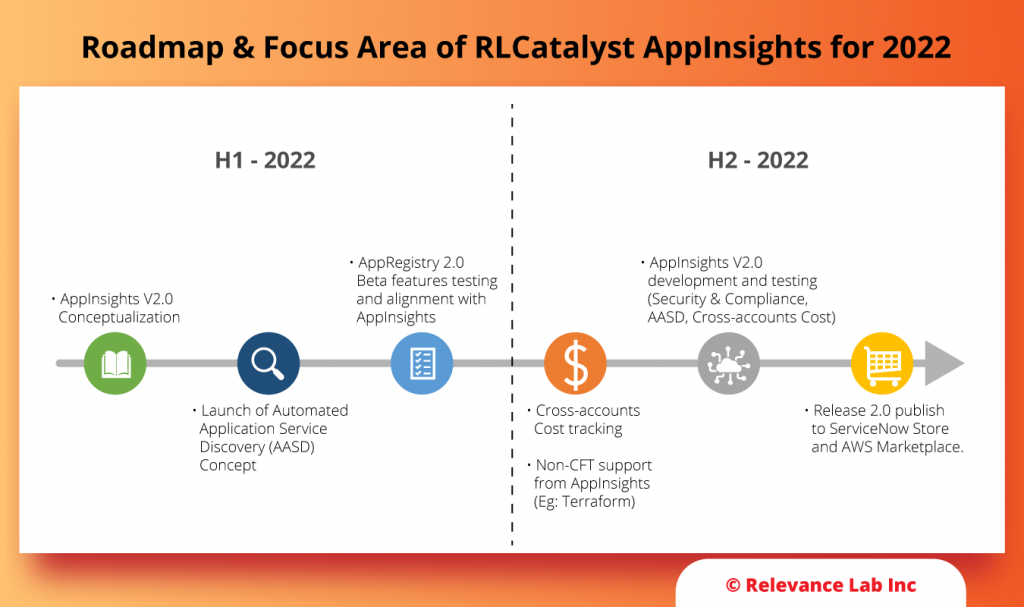
As shown above, the plan is to have an updated version of AppInsights V2.0 on ServiceNow store by the end of 2022, which will include the following additional features.
- Automated Application Service Discovery (AASD)
- Cross account Applications Cost tracking
- Support for Non-CFT based applications like Terraform
- Security and Compliance scores at an account level
- Support for AppRegistry 2.0
AWS Standard Products and Offerings in This Segment
AWS provides some key products and building blocks that are leveraged in the AppInsights solution.
- AWS Service Catalog
- AWS Service Catalog Service Management Connector
- AWS AppRegistry
- AWS M&G Cloud Environment Guide
Summary
Managing your cloud with an Application-Centric Lens can provide effective data analysis, insights, and controls that better align with how large enterprises track their business and Key Performance Indicators (KPIs). Traditionally, the cloud has provided a very Infrastructure-centric and fragmented view that does not allow for actionable insights. This problem is now solved by Relevance Lab AppInsights 2.0.
To learn more about building cloud maturity through an Application-centric view or want to get started with RLCatalyst AppInsights, feel free to contact marketing@relevancelab.com
References
Governance 360 – Are you using your AWS Cloud “The Right Way”
ServiceNow CMDB
Increase application visibility and governance using AWS Service Catalog AppRegistry
AWS Security Governance for Enterprises “The Right Way”
Configuration Management in Cloud Environments

